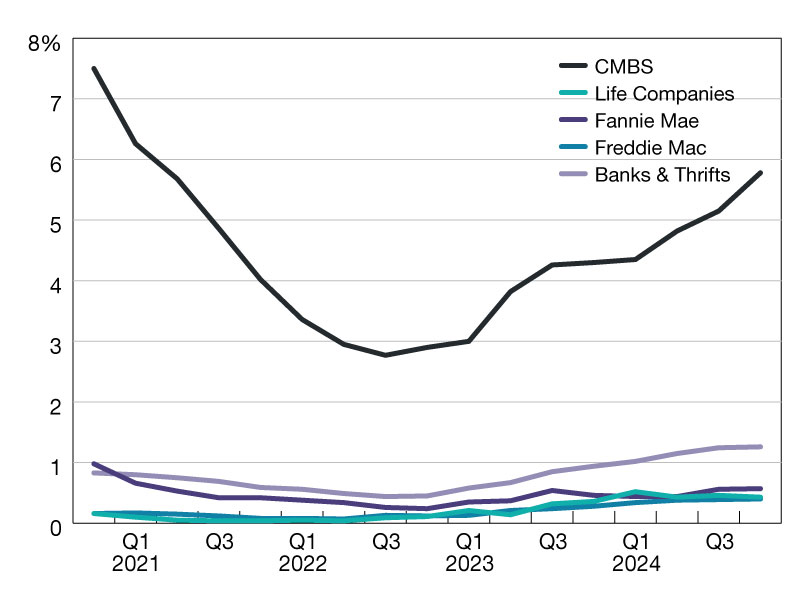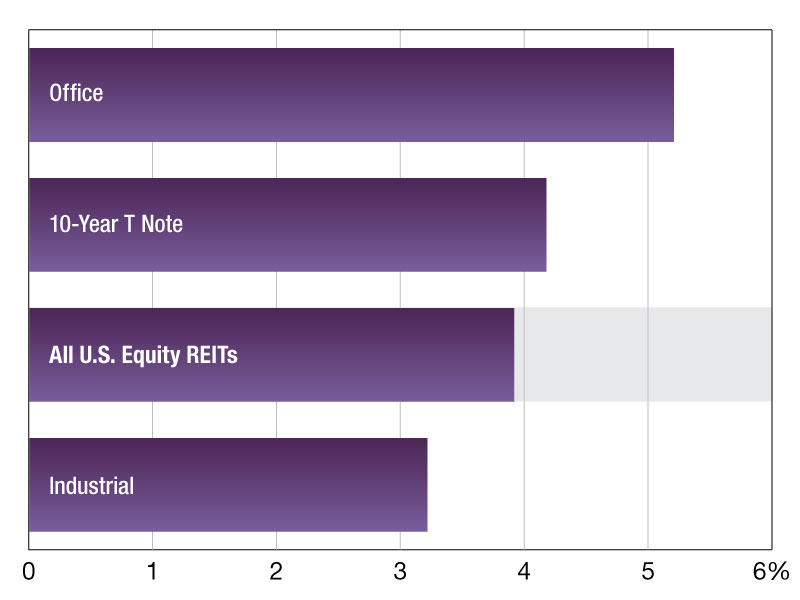Amid CRE Default Concerns, Bank Capital Rules to Change
Yardi Matrix Research Director Paul Fiorilla analyzes the potentially far-reaching proposal.

Paul Fiorilla, Director of Research, Yardi Matrix
As property owners try to handle the fallout of higher interest rates, the industry faces another debt market hurdle: regulatory changes for large banks that could make financing more expensive.
Federal banking regulators have proposed revamping bank capital standards that would increase the amount of reserve capital large banks set aside for some types of commercial mortgages while lowering charges for others. Higher capital charges would force large banks to either raise commercial mortgage rates or reduce profits, neither of which is palatable at a time when higher interest rates have pushed delinquency rates up and created a potential wave of defaults.
Commercial real estate trade groups are studying the proposal, which released by the Federal Reserve, FDIC, and the Office of the Comptroller of the Currency (OCC) in late July, to determine the impact on the industry. The regulatory agencies involved are taking comments through the end of November, and changes are likely to go into effect in 2024.
Regulators are proposing to increase bank capital requirements by 5 percent to 19 percent depending on the institution’s size. The biggest increase would involve the eight largest banks, dubbed Globally Systemically Important Banking Organizations (GSIB), whose capital requirements would increase by 19 percent. Non-GSIB banks with more than $250 billion of assets would get a 10 percent increase, while banks with assets between $100 billion and $250 billion will go up by 5 percent.
Risk model
Other parts of the plan could mitigate some of the increase in capital charge. The proposal would require banks to use a standard risk model for calculating capital charges. The impact of that change will vary depending on whether a bank’s current standards are more or less strict than the standard model.
Another part of the proposal would involve reducing risk weights for some low-leverage commercial mortgages. In those cases, loans originated at “60 percent or less LTV would receive a risk-weight of 70 percent, LTVs in the 60 percent to 80 percent range would receive a 90 percent risk-weight, and LTVs over 80 percent would be charged 110 percent,” according to an analysis by the CRE Finance Council. “This could marginally reduce capital requirements for CRE loans, as that same loan now would likely be assessed a 100% risk-weight.”
Regulators are trying to strengthen bank balance sheets and avoid more failures such as SVB Bank and Signature Bank. Commercial mortgages are considered a relatively risky segment of bank balance sheets because historically the sector is prone to waves of defaults during recessions or when property markets get overbuilt.
Refi struggles
The timing of the proposal, coming after the Federal Reserve has raised short-term interest rates by 525 basis points since the spring of 2022, is not ideal for commercial real estate. Many borrowers are struggling to refinance mortgages originated at 3-4 percent coupons with new loans at 6-8 percent rates, leading to property owners having problems with refinancing. The CMBS delinquency rate climbed to 4.4 percent in July, up 137 basis points year-over-year, and that number is expected to increase sharply as loans come due in the next 12-24 months. CMBS delinquencies remain well below their 10.3 percent peak during the height of the pandemic in 2020.
Commercial banks are crucial to the property market because they represent the largest source of debt. Banks hold on their balance sheets between 40-50 percent of total outstanding commercial mortgages, depending on how they are counted. Large banks with $250 billion or more in assets historically have originated between 13-18 percent of all commercial mortgages. Regional and local banks generally originate a similar amount, although their activity tends to vary more than large institutions. Many banks have reduced commercial lending in recent months due to worries about risk and the wide gap between short- and long-term rates.
Though the changes are complicated, some in the commercial real estate industry are convinced that the net result will include higher capital charges for large banks lending on commercial properties. “Are we going to get a capital charge raise? Yes, the question is how big,” said Mike Flood, senior vice president of commercial/multifamily policy at the Mortgage Bankers Association.







You must be logged in to post a comment.